John’s Gospel has been known since the second century as “the spiritual Gospel.” One of the features that earns it that reputation is that John weaves the insights that stem from Jesus’ resurrection into the narrative account of Jesus’ activity, even before the Crucifixion. In this case, John 10:22-30 addresses the issue of the “sheep” of Jesus, the same group he expressed concern for last Sunday in the context of a Resurrection appearance. Their identity as gathered around the Lamb is portrayed in visionary terms in Revelation 7:9-17. That perspective gives new meaning to Psalm 23, which the Lectionary appoints for today. Last Sunday’s readings also introduce the focus on Peter in today’s reading—Acts 9:36-43—where he takes up a ministry of healing comparable to that of Jesus.
The First Reading
Acts 9:36–43
Continued Witness by Rock—Peter—through the Ministry of Healing
As the witness to Jesus continues in the book of Acts, Rock—Peter—is called upon to help after the death of a committed student, named Tabitha. Parallel to Jesus’ healing ministry (Mark 5:35-43), Rock prays over Tabitha, and she returns to life. As the news of Tabitha’s healing spreads, many throughout the region of Joppa believe in the Lord.
—
In Joppa, there was a committed student named Tabitha, which when translated is Dorcas (“gazelle”). She was known for good works and charity to the poor. In those days she became ill and died. When they had washed her, they laid her in an upper room. Now since Lydda was near Joppa, when the students heard that Rock—Peter—was there, they sent two men to him, urging him, “Do not hesitate to come to us.” So Rock rose up and went with them. When he arrived, they took him into the upper room, and all the widows stood by him, crying and showing all the tunics and garments that Dorcas was making when she was with them. Then Rock pushed them all out. He went down on his knees and prayed while turning to the body; he said, “Tabitha, arise.” She opened her eyes, and when she saw Rock, she sat up. He gave her his hand and raised her up. Then calling the holy community along with the widows, he presented her alive. It then became known throughout all Joppa, and many believed in the Lord. And so, he stayed some days with a certain Simon, a tanner.
The Psalm
Psalm 23
God Protects Us as a Shepherd in Dark Times
Psalm 23 portrays God as a shepherd who protects the flock even in the darkest times. The image of God as shepherd connects this passage to the reading from John, which is today’s Gospel, in which Jesus refers to his followers as sheep to whom, because they hear his voice, he gives eternal life. This psalm’s reference to the fearlessness of the psalmist, even when traversing “a valley as dark as death,” hints at the idea of escape from death.
—
- A song of David.
The Lord is my shepherd, I shall not want. - God lies me down in grassy meadows;
to still watering places, God guides me. - God refreshes my soul.
God directs me in the ways of righteousness,
for the sake of God’s name. - Even when I walk in a valley as dark as death,
I fear no evil,
for you are with me.
Your rod and your staff comfort me. - You prepare before me a table in the presence of my enemies.
You have anointed my head with oil.
My cup overflows. - Yes! Goodness and kindness will pursue me,
all the days of my life.
And I shall dwell in the house of the Lord
for the length of my days.
The Second Reading
Revelation 7:9-17
Vision of Those Who Are Saved
In the sequence of the visions of John of Patmos, four angels are commanded to prevent all harm to God’s servants who are marked with a seal. The number of those sealed comes to 144,000:12,000 from each of the tribes of Israel (Revelation 7:4-8). A numberless host from the nations now supplements the 144,000, all of whom shout out with the heavenly court to praise the one seated on the Throne as well as the Lamb. Clothed in white robes, they are drawn close to the Throne and its shelter, having purified themselves in the blood of the Lamb.
—
After this I saw, and look—a massive throng that no one could number, from every nation: clans, peoples, and tongues. They stood before the Throne and before the Lamb clothed in white robes and with palm branches in their hands. And they cried in a great voice:
“Redemption belongs to our God,
to the one seated upon the Throne
and to the Lamb.”
All the messengers stood around the Throne, as well as the elders and the four living animals, and they prostrated before the Throne and worshipped God:
“Amen. Blessing and glory and wisdom
and thanksgiving and honor and power
and strength belong to our God forever. Amen.”
One of the elders asked me, “Who are those clothed in white robes, and where do they come from?” I answer him, “My Master, you know.” He said:
“They come from the great tribulation;
they washed their robes
and whitened them in the blood of the Lamb.
For this reason they are before God’s Throne
and attend him day and night in his temple.
And the one who sits upon the Throne will shelter over them;
they will neither hunger nor thirst,
neither sun nor any burning will fall on them,
because the Lamb in the midst of the Throne
will shepherd them and guide them
to fountains of living water.
God shall wipe every tear from their eyes.”
The Gospel
John 10:22-30
Jesus in Jerusalem at Hanukkah
The Renewal Feast—Hanukkah—in Jerusalem celebrated the restoration of the Jerusalem Temple after its defilement by foreign forces in the period of the Maccabees (164 BCE). John’s Gospel makes this celebration the occasion for a dispute between Jesus and other Jews. In this case, local Judeans question his status as the Anointed. Jesus answers, speaking of who truly is part of the flock that God is gathering out of the world. In the mysterious claim of being one with “the Father,” Jesus proclaims himself a renewed and restored temple, the place where people encounter God. Written after the year 70 CE, at a time when the Jerusalem Temple again lay in ruins so that no one could realistically seek God there, the Gospel undergirds the faith of an early Jesus community.
—
Then came the Renewal Feast in Jerusalem; it was winter, and Jesus was walking in the Temple in the portico of Solomon. The Judeans circled him and said to him, “How long will you distress our soul? If you are the Anointed, tell us in public.” Jesus answered them, “I told you, and you don’t believe! The deeds that I do in the name of my Father, they bear witness concerning me, but you do not believe, because you are not from my sheep. My sheep hear my voice, and I know them and they follow me; I give them eternal life and they will never perish and no one will take them from my hand. My Father gave them to me; he is greater than all and no one is able to take from the Father’s hand. I and the Father are one.”

